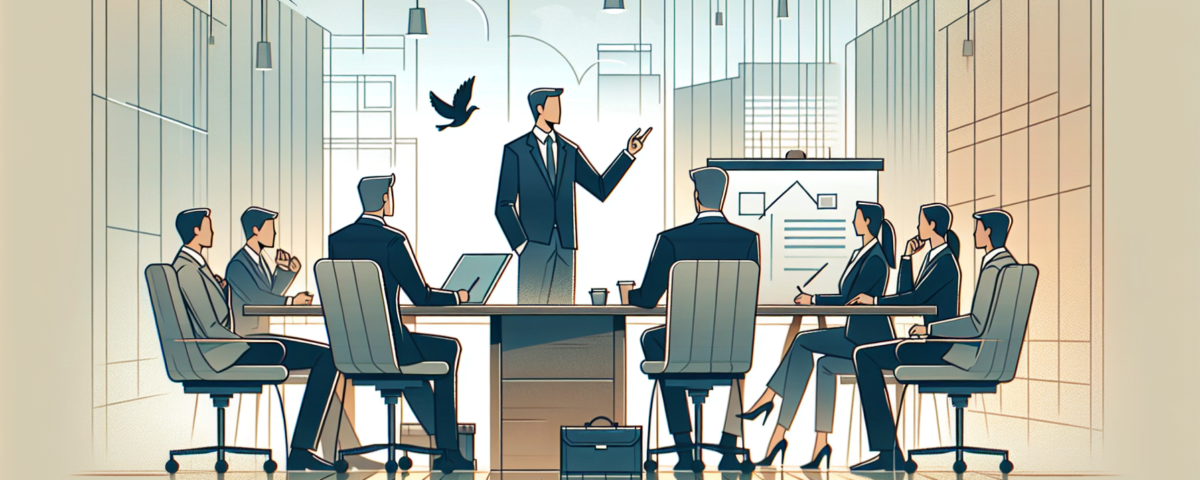The Power of Strategic Questioning
Strategic questioning is not just about obtaining answers; it’s about unlocking the potential within each team member and the collective wisdom of the group. By asking incisive questions that challenge assumptions and provoke thought, we engender a more dynamic and creative atmosphere in meetings. This method facilitates deep dives into projects, enabling teams to identify potential pitfalls, seek novel solutions, and leverage diverse insights to foster innovation.
Questions such as “What would have to be true for this to succeed?” or “What obstacles could derail this project?” catalyze a forward-thinking mindset. Such inquiries encourage participants to step out of their comfort zones and consider multiple scenarios and outcomes. When team members engage in this level of strategic questioning, the meeting becomes an interactive forum where varying perspectives can be shared and synthesized, ultimately leading to more robust and resilient strategies.
Statistics reinforce the value of strategic questioning: companies that encourage employees to engage in inquiry and dialogue are 3.5 times more likely to outperform their peers (Hay Group study). The emphasis here is not merely on asking more questions but on asking the right ones—questions that unravel complexities, surface hidden insights, and inspire collective action. As we nurture this skill, we lay the groundwork for more engaged and empowered teams.
Cultivating a Culture of Curiosity
A transformative team environment hinges on fostering a culture of curiosity. When curiosity becomes a core tenet of a team’s ethos, every meeting brims with possibilities. Encouraging team members to remain genuinely inquisitive about their work and the endeavors of their colleagues paves the way for a collaborative and dynamic work culture.
Cultivating such a culture starts with leadership embracing a mindset of continuous learning and demonstrating that asking questions is not just accepted but expected. This proclivity for curiosity must permeate all levels of the organization, impacting not only meetings but everyday interactions as well. For instance, instead of relying on status reports, ask team members how new findings may affect current understanding or strategy.
Strategies to promote a curious culture abound: from innovative workshops designed to break down silo mentality to cross-departmental ‘curiosity sessions,’ where members exchange roles to gain fresh perspectives. Such initiatives not only enhance empathy but also break routine patterns, thereby enabling a more fertile terrain for creative brainstorming and problem-solving.
Structuring the Meeting for Maximum Engagement
To optimize engagement, meetings must evolve beyond the conventional ‘speak-and-listen’ format. Crafting a structure that actively involves participation is a significant stride towards making meetings worthwhile.
Start by defining clear objectives for the meeting, ensuring that every agenda item is purposeful and tied to these goals. Short, focused meetings with explicit aims tend to maintain engagement more successfully than lengthy, aimless gatherings. An efficient structure includes time allocations for each part of the meeting, allowing for discussion without wandering off topic—a technique adopted by 78% of high-growth companies, as found by London Business School’s research.
A meeting’s structure should also accommodate various question-driven activities. For example, breakout groups can tackle specific issues or brainstorming sessions can be held to elicit a diverse range of ideas. Additionally, rotating facilitators can keep the meeting lively, ensuring that different voices and approaches guide the discussion.
Rethinking Traditional Meeting Roles Through Thoughtful Inquiry
Thoughtful inquiry can reshape the typical dynamics of meeting roles. Moving away from hierarchical models, where a single leader holds the reins of the conversation, adopting a more democratic approach can assure each member’s voice is heard.
This shift involves designating roles such as facilitators, note-takers, and timekeepers amongst participants, instilling a shared responsibility for the meeting’s success. The facilitator, especially, plays a crucial role, guiding the flow of conversation with key questions and ensuring that all perspectives are considered. By reimagining these roles, meetings can transform into collaborative sprints rather than top-down briefings.
Embracing this approach, Google’s Project Aristotle revealed that the most successful teams were those where members spoke in roughly the same proportion—a phenomenon they termed “equality in conversational turn-taking.” Integrating these insights into meeting structures ensures a more egalitarian and inclusive approach to discourse and decision-making.
Harnessing the Potential of Asynchronous Communication
Asynchronous communication has risen to prominence, offering a promising alternative to live meetings. It provides a platform where team members can contribute at their own pace, ensuring considered responses and flexible collaboration.
Through asynchronous channels, the constraints of time zones and schedules fade, unlocking avenues for global teams to engage in continuous dialogue. Utilizing tools such as shared documents, forums, and project management software encourages a perennial state of questioning and reflection. This method, endorsed by 43% of highly distributed teams according to OWL Labs, promotes an even deeper level of thoughtful inquiry as it provides the space to ponder and research before responding.
However, asynchronous communication should not entirely replace live interactions. It should serve as a complementary approach, suitable for certain aspects of teamwork such as project updates, feedback on deliverables, or preparation for decision-making. Striking the right balance between asynchronous and synchronous communication, teams can reap the benefits of both worlds, fostering a more resilient and adaptive collaboration landscape.




